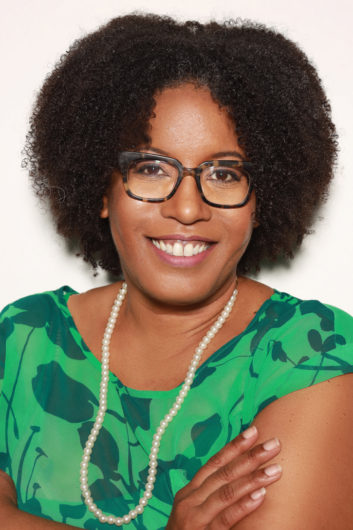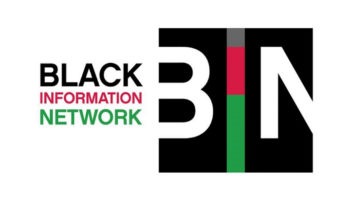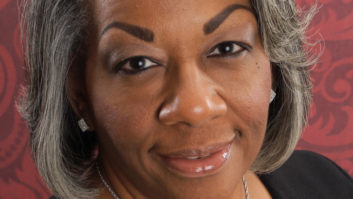 Tanita Myers is the director of news operations for iHeartMedia’s Black Information Network. She discusses the inner workings and reason for the news and information source.
Tanita Myers is the director of news operations for iHeartMedia’s Black Information Network. She discusses the inner workings and reason for the news and information source.
She was interviewed by Suzanne Gougherty, director of MMTC Media and Telecom Brokers at the Multicultural Media, Telecom and Internet Council. MMTC commentaries appear regularly in Radio World, which welcomes other points of view on industry issues.
Suzanne Gougherty: Soon to be BIN’s first anniversary, I imagine it has been a super exciting year – being part of historical launch of the FIRST Radio News outlet dedicated to serving the Black community, please tell us a few of your top highlights?
Tanita Myers: The Black Information Network’s first anniversary is such a wonderful milestone. In fact, it’s historic. It is such a privilege to be part of a network whose mission is to inform my community on issues that affect us every day and to have our stories told by people who look just like me.
The Black Information Network came along at just the right time as America and the world was dealing with a racial reckoning. It always seemed as if the mainstream media would only report the negativity within the Black community, therefore providing viewers with a slanted perspective on the experiences within the Black community.
At the Black Information Network we get to dive in deeper to expose the roots of some of the disparities that have plagued our community; but more importantly we also have the opportunity to highlight the incredible strides, accomplishments and sheer ingenuity of what makes Black people an incredible part of the world’s fabric.
[Read: Coles Takes a Bold Step]
There have been many highlights this past year including our coverage of the historic election of Vice President Kamala Harris, BIN’s live coverage of the Derek Chauvin trial and of course the opportunity to pay homage to civil rights leaders who have helped paved the way for true progress for the African-American community.
I’m also proud of how BIN has covered international stories such as the fighting in Tigray region of Ethiopia, lack of COVID resources in Haiti and the strife of Black people around the world who have also started their own Black Lives Matter movements.
I beam with joy every day to lead an award-winning team of journalist who brings these stories to life, from our perspective in our voice.
Gougherty: You not only produce news content, you’re a host, along with an array of other responsibilities, how to you juggle day-to-day operations? And what takes priority?
Myers: Juggling day-to-day operations is easy because of the extraordinary talented team that surrounds me. They are all personally invested in making sure BIN highlights the most important stories that educate and inform our listeners. Our priority lies in finding and researching the stories about Black experiences — whether police brutality, systemic racism, oppressive laws, voting rights, opportunities for Blacks to prosper, build thriving communities and more. The old adage that “knowledge is power” is something we subscribe to.
Gougherty: When and how does your day start and end? How do you relax?
Myers: My day begins at 2:30 a.m. ET which allows me to prep for our first editorial pitch meeting at 3 a.m. ET. I also use that time to catch up on overnight emails and news to make sure we are always accurate in our reporting. The 3 a.m. pitch meeting is just one of several during the course of the day. During pitch/editorial our anchors and I discuss what stories should take priority for that day’s reporting and what angles are most relevant to the Black community. The last editorial of the day is at 7 p.m.; after which I spend a couple of hours catching up on emails and checking various wires. Somedays the news cycle moves pretty fast, so I like to make sure we’ve tapped all resources such as social media to ensure we are giving untold stories the exposure needed to invoke change or inspire our community to greatness.
 Gougherty: That sounds like a busy, work-dominated schedule. Do you have time to relax or break away?
Gougherty: That sounds like a busy, work-dominated schedule. Do you have time to relax or break away?
Myers: Wow, relaxation? What a great question. I really enjoy my job, so sometimes it’s hard for me to relax in the “traditional” sense. There is always news going on! With that being said, I do love to cook and listen to music, usually both as the same time. I’m a pescatarian/vegan, if that’s a real thing, so I love trying out new recipes while listening to some good music of all genres and tempos.
Gougherty: What do you feel are some of the most important issues that impact the Black community? And how do you and your team determine what content is given priority
Myers: The most important issues affecting the Black community are varied, but usually boil down to the same buckets. Systemic racism, police brutality, economic and health disparities, creating generational wealth and education. Each is a priority and we try our best to make sure we cover the it all.
Gougherty: What were the steps you took to prepare your team for the Chauvin trail? Who was the lead reporter? Tell us about BIN’s live coverage on the ground in St. Paul?
Myers: The Chauvin trial was this generation’s “trial of the century.” We launched the Black Information Network a month after George Floyd’s murder, so we began investigating and reporting all aspects of the case from Day One. When it came time to prepare for the trial we made sure to encompass all facts so we could accurately inform our listeners of how we got to this point in this horrific crime. The Chauvin trial was more than just seeking justice for George Floyd’s murder, the Black community also saw this trial as an opportunity to gain justice for all the other cases of police brutality that were never prosecuted. Because of the magnitude of the trial, for the first time the Black Information Network went live with a daily wrap up special of the day’s court proceedings with legal analysis and reactions from civil rights leaders from around the country. Vanessa Tyler helmed our coverage with contributions from the whole entire staff to make sure we covered every angle of this story.
Gougherty: BIN is on many stations coast to coast, how is local news, weather coordinated and communicated to all the various platforms — from the iHeartRadio apps, smart TV, smart speakers, etc. and over the airwaves?
Myers: The Black Information Network is growing daily and we are absolutely excited to bring local coverage to each of those communities. We have a team of reporters who are dedicated to researching and telling the stories that impact residents in their neighborhoods. When curating the local segments, the Black Information Network homes in on state, city, municipal politics and laws that effect their everyday lives. We also make sure we provide resources that residents can use to benefit their quality of life and empower them to strengthen their communities to generate positive outcomes. We have a wonderful partnership with Total Traffic and Weather Network (TTWN) and they have a stellar team of reporters who accurately deliver traffic and weather updates to our markets.
Gougherty: Do you have a news assignment desk?
Myers: We definitely have an assignment desk, but our anchors are the real drivers of sourcing news content. Once our daily editorial meeting is completed, stories are assigned based on block type. We cover news, entertainment, sports, and money. We are also fortunate to air commentaries from Roland S. Martin and Mo Kelley that focus on the liberal perspective. Additionally, since Black folks are not monolithic, we are also air conservative commentaries from Black talk show host James T. Harris.
Gougherty: Can you tell us about feature stories? Especially the good news stories that happen often in Black communities that are often overlooked in mainstream media.
Myers: There are so many “good news” stories that are overlooked and I’m so glad that we get the opportunity to showcase the Black community in such a positive light. My hope is that sharing these types of stories with our audience will inspire others to greatness and let them know that they too can succeed or become a positive leader in their communities. We also have a feature called “That’s A Fact” — where we applaud the accomplishments of Black people throughout history and those who are making history today. It’s important for our audience to know how wonderfully talented Black people are and the positive innovating things we have contributed to the world at large.
[See More Interviews With Suzanne Gougherty]
Gougherty: How do you assess the end of a news cycle day?
Myers: Ha! The news never ends. We are a 24/7 news network and the word operates on the same clock — news never sleeps.
Gougherty: What experience and understanding of the news industry did you have before joining BIN and how did it assist with the launch of BIN?
Myers: I’ve worked in traditional newsrooms before, but I think the most relevant experience of my career was the 16 years I spent with Tom Joyner. I’m originally from Phoenix, Ariz., and when growing up the Black population was below 10% so there weren’t very many opportunities to learn about our history — just the basics that was taught in school books.
I always tell people that my HBCU is Tom Joyner University. While there I learned so much about who we are as Black people, our history, and the importance of pride in all we do. He also taught me the importance of telling our stories and being unapologetically Black. Tom values education, civil rights, economic empowerment and closing the gap in our health disparities; these are the lessons I take with me every day into the BIN newsroom. I will be forever grateful for the life and broadcast “pearls of wisdom” I learned from The Fly Jock. Without the TJMS experience, I’m not too sure I would have been able to help guide this network into its true purpose of telling our stories, in our voice, from our perspective.







